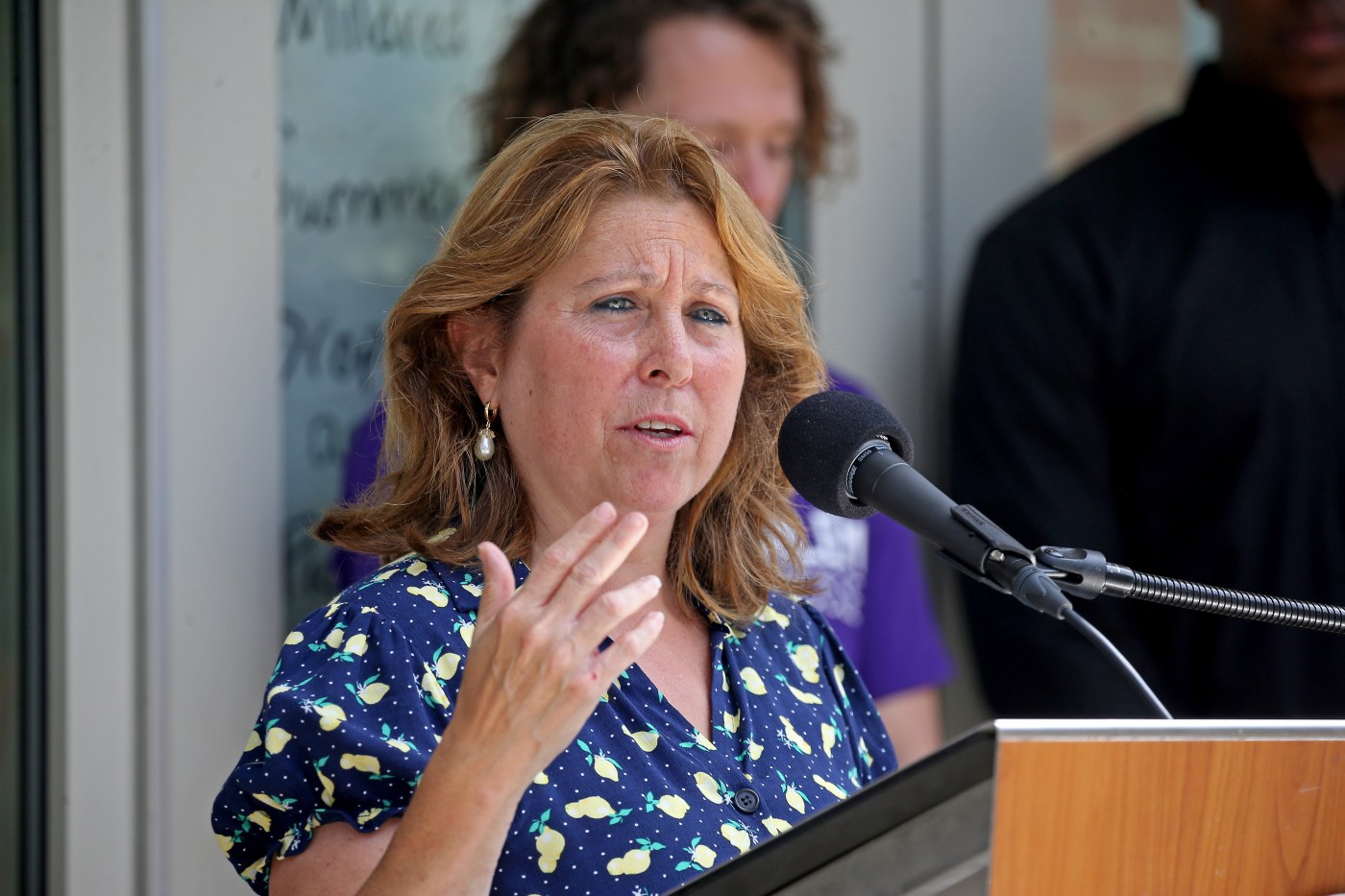
‘Final mile of the marathon:’ BPS strategizes addressing decades of neglect in school infrastructure
Boston school officials are on the “final mile” of plotting out how to address decades of neglect and disinvestment in school facilities, district officials announced.
“After many decades of the firm decision making, shifting our physical footprint will be disruptive,” said Superintendent Mary Skipper ahead of a presentation on the facilities plan at the Nov. 15 School Committee meeting. “In some cases difficult. Tools we’ve developed over the last 18 months will enable greater transparency, collaboration with our communities to understand how and why certain decisions are made.”
With about half of facilities built before WWII and some around 100 years old, Skipper said, the project is an “ambitious” and unprecedented undertaking for the district but necessary to provide students “fully inclusive, high quality education.”
The district will complete and present a long-term facilities plan to DESE next month as part of its Systemic Improvement Plan, a step agreed upon to avoid a state takeover. The decision making rubric presented to the school committee last week determines project priorities and investment strategies across the district.
The new facilities planning rubric joins the Facilities Conditions Assessment tool which tracks the status of all BPS buildings and was released to the public in the fall, along with the district’s efforts to walk through school facilities, gain public feedback and consult on design standards over the last 18 months.
These efforts all feed into the final long-term facilities plan, which is intended to operate as an “objective framework grounded in data for understanding the impact of capital planning proposals.”
“We want to be clear that the long term facilities plan is not a full list of exactly what will happen to every BPS school,” said Rebecca Grainger, Boston’s Senior Advisor for Youth and Schools. “Instead it’s an ambitious process document with a set of dynamic tools that can be used to shape facilities decisions well into the future in partnership with community.”
Starting next year, said Chief of Capital Planning Delavern Stanislaus, all new projects will be guided by the long-term facilities plan. Stanislaus noted that “closures and mergers are in our future along with new and renovated facilities.”
Several of the facilities projects proposed in the last year have stirred controversy with school communities, including moving the O’Bryant exam school from Roxbury to West Roxbury and mergers like the Sumner-Philbrick.
Goals for the facilities are built around “building models” aimed to provide a “high quality student experience.” This means meeting standards from ADA compliance and modernized facilities to including robust academic, wellness and community spaces.
Related Articles
Superintendent Skipper says exam school admissions changes are being ‘actively looked at’
A Jamaica Plain school went into ‘safe mode’ while staff searched for a missing student
Boston boy, 14, charged with stabbing another teen boy in Allston held on $1,000 bail
City Councilors continue months-long push for new accessible entrance at English High
Boston’s exam school admissions changes spelled out
Of the 119 BPS school buildings, the district determined 71 would fit into building models — by renovation, additions, new buildings on site or new campuses — and 48 do not “easily fit” into building models, according to the BPS presentation. The district will do “more analysis” on plans for these.
Though officials presented the broad rubric for determining decisions on facilities project, committee members questioned the lack of presented information on factors like enrollment trends, budgeting and timeline and a more definitive plan.
“Given this tool, why wouldn’t we do something more masterful or strategic?” said committee member Brandon Cardet-Hernandez. … “With this tool, we could scope out the whole system. We may not have the money to to do that work, but we could be transparent with communities that over the next 10 years, this is our plan.”

